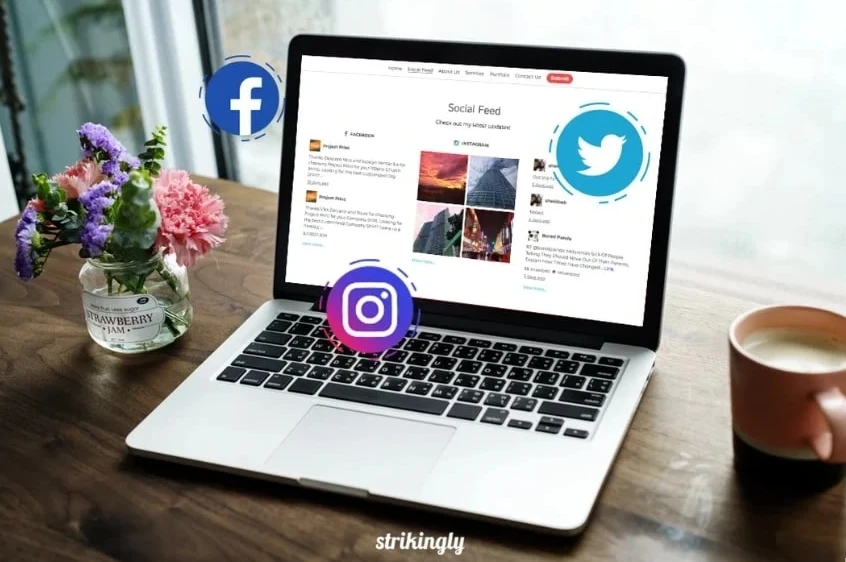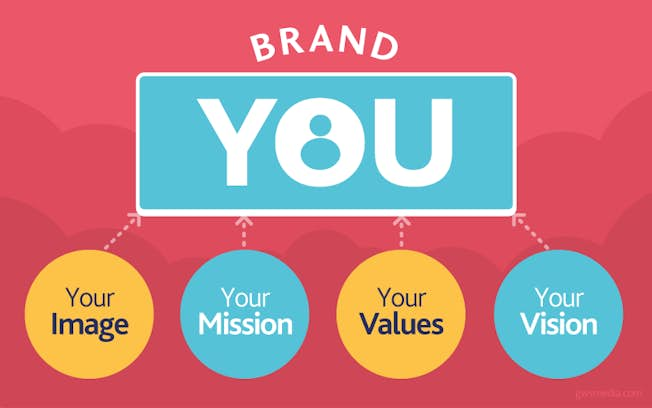BUILDING A PERSONAL BRAND AS A DIGITAL MARKETER: A COMPREHENSIVE GUIDE
In a fast-changing world of digital marketing, personal branding becomes highly necessary to one’s career. As digital continues to evolve, it’s important to stand out from the crowds of digital marketers. The strength of a personal brand not only gives credibility but also opens doors to very exciting opportunities—whether clients, job offers, or valuable partnerships. In this blog, we shall take you through the important steps to build a robust personal brand as a digital marketer.
The Steps to Build a Robust Personal Brand as a Digital Marketer are as follows:
1. Define Your Niche
The first step in building a successful personal brand is to narrow down your niche in the vast digital marketing space. Digital marketing encompasses search engine optimization, content marketing, social media management, email marketing, and PPC advertising, among other areas. Identify an area where you excel and feel passionate about and build your personal brand around that.
Ask yourself:
What do I love most about digital marketing?
What makes me different from others in the industry?
What specific problems can I solve for clients or employers?
By answering these questions, you can define your niche and tailor your personal brand messaging to attract the right audience.

2. Develop Your Unique Value Proposition (UVP)
Once you have decided on a niche, it is time to formulate your Unique Value Proposition, which is a one- or two-line concise message describing what you do, who you serve, and what sets you apart from everyone else. This statement is going to be the building block of your personal brand and will determine how you present yourself across all channels.
For instance, instead of saying, “I do social media marketing,” a better UVP would be, “I help small businesses boost their online presence and sales through targeted, results-driven social media marketing strategies.”

3. Leverage Your Online Presence
Your online presence is your modern-day business card. To establish a powerful personal brand, you must create and optimize your online profiles. Here’s how you can do it:
Use a professional photo, attention-grabbing headline, and meaningful description that highlights your area of specialization on LinkedIn. It must be updated frequently; interactions with professionals in other specialties are also necessary so people can see your own professional brand.
Website/Portfolio: If you don’t have one already, now is the time to create a website or portfolio. This is your best platform to showcase your skills, projects, client testimonials, and even share a blog that features your insights on digital marketing.
Social Media: Select social media platforms that best fit your personal brand. For example, use LinkedIn for professional networking, Instagram for showcasing creativity, and Twitter for engaging in industry discussions.

4. Content with Consistency
The best way to build your personal brand is through the creation of content consistently. Content proves your expertise and keeps the audience engaged. Here is how you can do it:
Blogging: Blogging is the most convenient way to share valuable insights, case studies, or industry trends. Each post is optimized for SEO, helping you gain visibility.
Video Content: Create tutorials, webinars, and live Q&A sessions. Video content is a great way to humanize your personal brand and connect with your audience.
Podcasts: If you enjoy speaking, consider starting a podcast. This is an excellent platform to share your knowledge, build your personal brand, and connect with listeners in your niche.
Social Media Posts: Share best practices, industry news, and personal insights. Images and infographics increase the shareability and look of posts.

5. Network with Industry Peers
Networking is an integral part of your personal brand. You are expanding your reach and credibility by establishing relationships with peers in the digital marketing industry. Here are some tips for effective networking:
Join Online Communities: Participate in LinkedIn groups, Facebook communities, or industry-specific forums. Engage in discussions, share insights, and build your reputation.
Attend Industry Events: Attend conferences, webinars, and workshops—whether virtual or in person. These events are valuable for learning from industry experts, interacting with fellow marketers, and demonstrating your knowledge.
Work with Others: Guest blog, webinars, or collaborative projects. This cross-promotion introduces your personal brand to new audiences and builds credibility.

6. Demonstrate Your Work
The best way to establish credibility is by demonstrating your work. Use case studies, testimonials, and a well-curated portfolio to demonstrate the value you bring. Here’s how you can do it:
Case Studies: Write detailed case studies that highlight challenges, strategies, and results. This helps your audience understand your expertise and approach.
Testimonials: Collect testimonials from clients and colleagues. Positive reviews build trust and social proof, which strengthens your personal brand.
Certifications and Awards: Display any relevant certifications or awards you’ve earned. These add authority and show that you’re committed to your professional development.

7. Authenticity
In a world of curated personas, authenticity stands out. To build a strong personal brand, be genuine in your communications and interactions. Share both your successes and challenges. This vulnerability helps build deeper connections with your audience.
Share personal stories about your journey in digital marketing, what you’ve learned from failure, and your passions outside of work. Authenticity is the key to fostering trust and loyalty in your personal brand.

8. Manage Your Online Reputation
Monitor your online reputation as you develop your personal brand. This can include tracking what people say about you and taking necessary measures to maintain a good image. Use tools such as Google Alerts to monitor when your name is being mentioned, and address negative feedback promptly and professionally.

9. Stay Updated on Industry Trends
The digital marketing landscape is constantly changing. You must stay updated on the latest tools, technologies, and trends to remain an expert in your field. Here’s how:
Follow Industry Leaders: Subscribe to blogs, podcasts, and newsletters from top digital marketers and industry publications.
Join Professional Associations: Becoming a member of digital marketing associations gives you access to exclusive resources, training, and networking opportunities.
Keep Learning: Continuously upgrade your skills by taking online courses, certifications, and attending workshops that will further your knowledge and enhance your personal brand.

10. Measure Your Progress
Track the success of your personal brand by keeping track of your performance on a regular basis. Analyze your online reach, engagement rates, and how effective your content is with analytics tools. Regularly checking your progress helps you decide what needs improvement.

11. Develop Your Brand Voice
Your personal brand’s voice is the tone and personality conveyed through your content. Establishing a clear, consistent voice makes your brand memorable and relatable. Consider the following when developing your voice:
Choose Your Tone: Decide on the tone of your content—whether it’s professional, casual, humorous, or authoritative. Your tone should match both your personality and your audience.
Consistency Is Key: Use the same voice across all platforms—social media, website, emails—to reinforce your personal brand identity.
Engage Authentically: Let your true personality shine through in your interactions. Share your perspectives and insights while engaging with your audience.

12. Use Visual Branding
A visual identity is a critical component of your personal brand. Ensure your visuals are cohesive and aligned with your brand’s message. Here are some elements to consider:
Logo and Brand Colors: Create a logo and a color scheme that represents your personal brand. Consistent visual branding is a powerful way to create recognition.
Professional Photos: Use professional images on your profiles and website to give credibility and make a good impression.
Consistent Visuals: Use the same fonts, graphics, and images in your content to strengthen your brand identity.

13. Patient and Persistent
Building a strong personal brand does not happen overnight. It takes time, consistency, and steady effort to build an audience, create trust, and establish authority in the field. Be patient with the process and allow your personal brand to grow with you. Be consistent and committed to consistently creating quality content and engaging with your audience. As you continue doing this, people will get to know you, and opportunities will present themselves.

14. Use Multiple Channels of Content
While you need to keep creating content for your personal brand, you also want to vary your channels. This helps you reach different audiences and strengthens your personal brand message. Here is how to do it:
Write articles on industry sites. You might write articles for industry sites like Medium or LinkedIn Pulse. That positions you as an expert and helps expand your personal brand.
Appear on podcasts and webinars. Share your expertise in podcasts and webinars; you get access to another audience and add credibility to your personal brand.
Host live streams: Interact with your audience in a live, real-time situation on a platform such as Instagram Live, Facebook Live, or YouTube. In these settings, your personal brand is more human-like and accessible.
Using the variety of platforms will also enable you to continuously promote your personal brand message across various channels and audiences you haven’t reached before.

Conclusion
Building a strong personal brand as a digital marketer takes time, dedication, and strategy. From defining your niche and creating high-quality content to networking with industry leaders and maintaining a consistent online presence, each of these steps plays a crucial role in shaping a successful personal brand.
Remember that your personal brand is an expression of expertise, personality, and values. It is a long-term journey requiring patience, persistence, and commitment to continuously evolving with the change in the industry. Remain authentic, share valuable insights, and keep building those relationships. The more you nurture your personal brand, the more you will attract the opportunities, recognition, and success you deserve.


